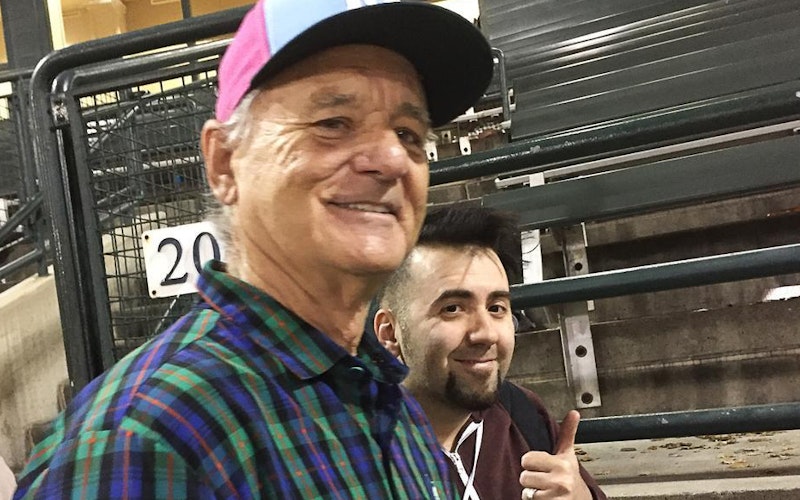
Movies
Bill Murray: Servant Artist?
Bill Murray’s impressive career includes the golden days of Saturday Night Live, blockbuster comedies like Ghostbusters, and acclaimed performances in art films. It may therefore seem odd that the Netflix documentary The Bill Murray Stories: Life Lessons Learned from a Mythical Man only marginally focuses on Murray’s achievements in television and film.
Instead, director Tommy Avallone focuses on the many bizarre accounts of Murray showing up uninvited in various social situations. By illuminating the veracity of dozens of urban legends surrounding how Murray spends his downtime, the affectionate documentary reveals a joy-seeking lover of humanity. At its best, The Bill Murray Stories reminds us of the countercultural yet biblical call to live in the moment, to lead by humbly serving, and to revel in the marvelous joy of authentically sharing in the lives of our neighbors.
The documentary begins with fictional vignettes dramatizing tall tales of a mythical figure who unexpectedly appears, inspires awe, creatively and humbly offers himself to the strangers around him, and then slips mysteriously away. In one account, the hero shows up at a construction site and recites poetry to the blue-collar crew. In another reenactment, he sneaks up behind a urinal and covers the occupant’s eyes with his hands, reciting the line, “Nobody will ever believe you.” Each retelling concludes with the punchline, “It was Bill Murray!” From there, the documentary tracks to interviews with real-life participants from similarly wacky stories, occasionally producing photographic evidence of a Bill Murray sighting.
Murray’s ability to celebrate the present moment emerges as a persistent life lesson. As the documentary reveals, Murray famously does not use an agent, choosing instead to field film roles and interview requests through a 1-800 number. Nobody, perhaps not even Murray, knows when or if he will show up. This unconventional behavior echoes James’ observation regarding the futility of worrying about tomorrow: “Why, you do not even know what will happen tomorrow. What is your life? You are a mist that appears for a little while and then vanishes.” And so, instead of holing up in a gated celebrity compound, Murray fully embraces the call to “live and do this or that” by repeatedly savoring the company of everyday strangers.
Murray’s ability to celebrate the present moment emerges as a persistent life lesson.
Admittedly, the superficial glee witnessed in a few of the celebrity contact-highs flirts with idolatry. Thankfully, the repeated accounts of Murry’s disarming humility saves The Bill Murray Stories from becoming a facile exercise in celebrity worship. Indeed, Murray’s desire not to make a spectacle of himself forms the common denominator of many of the stories. As one appreciative observer describes, “his charm is not to take over.” Examples are numerous. Outside of a baseball stadium, Murray hands a ticket for the seat next to him to a total stranger and playfully learns about her life for nine innings. He draws a crowd at a food truck and then climbs into the cab to help the starstruck owner distribute soft-serve ice cream. He stands alone in the kitchen at a wild frat party doing the dishes while unknowing partiers play quarters in the next room. Murray’s behavior, while often bizarre, nevertheless often adheres to the biblical foundation of servant leadership: “whoever wants to become great among you must be your servant.”
Perhaps the most servant-hearted story involves a long taxicab ride in which Murray learns that his driver aspires to play the saxophone but can’t find the time to practice. Murray insists on taking the wheel so that his new friend can ride in the back and blow his horn. They apparently drove around for hours, stopping in Sausalito long enough to enjoy great barbeque and share the music. “We all would do it, right?” Murray rhetorically asks in rare interview footage about his extracurricular social exploits. “If you saw that moment, you’d make the connection, and you’d do it right.” Sadly, I don’t think that most of us would.
As a young man, Murray trained with the great Del Close in improvisational theater at Chicago’s famed Second City. As The Bill Murray Stories explains, the concept of “yes, and,” guides the best improv and was central to Murray’s training. Rather than dominate a scene, this simple rule insists that performers unselfishly honor the contributions of their scene partners and just go with it. Doing so is not only generous, it frees the moment for unexpected creative possibilities. Murray’s training in “yes, and” helps explain his ongoing improvs with the people whom God places in his path. By following their lead, Murray shares and celebrates the ordinary yet radiant moments of existence.
And like good improv theater, joy abides in the service of carefully listening to your neighbor. Murray’s free-form exchanges with ordinary people exemplify Paul’s plea in 1 Thessalonians 5: “...always strive to do what is good for each other and for everyone else. Rejoice always...” Perhaps we should do likewise as we improvise our way through life. Like Murray, we would be well-served to cherish ordinary moments in the moment, to think of others before ourselves, and to delight in the unexpected results.
Topics: Movies